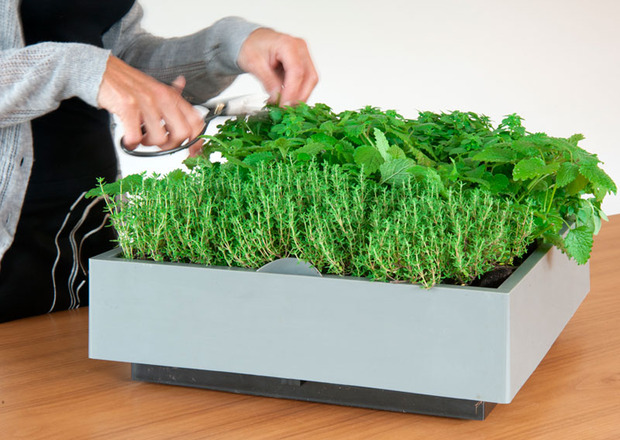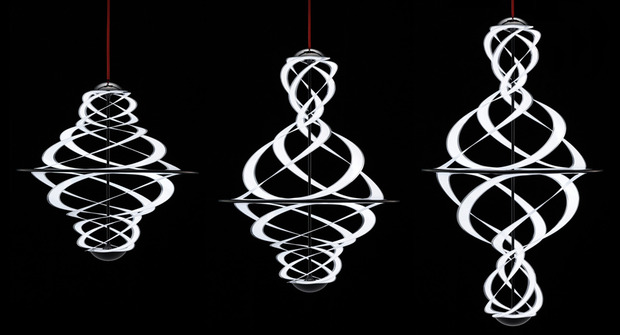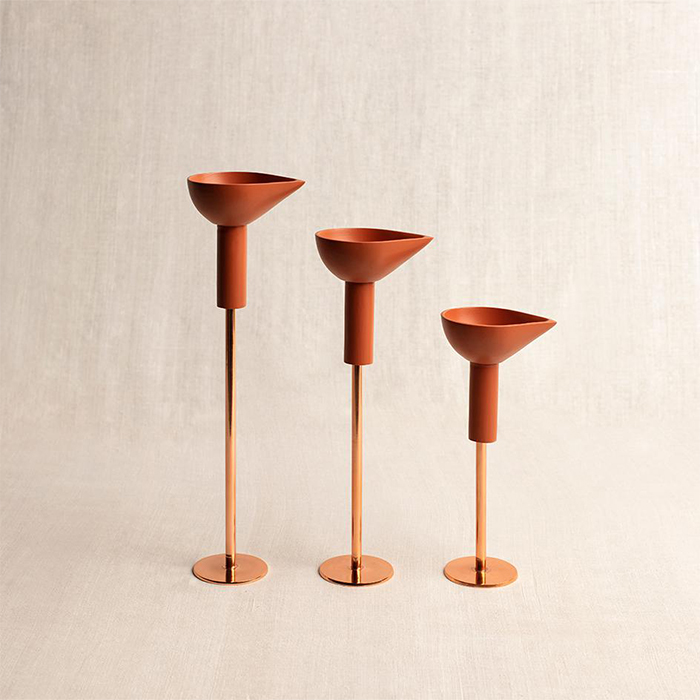Material Innovation at Maison et Objet 2013
3D printed architecture, wall gardens and electroluminescent lighting technology at this year’s fair



Earlier in the week we looked at unconventional seating design and the use of light as themes at Maison et Objet 2013, now we take a step closer to the design process and look back on a few material innovations we saw at this year’s fair. From wall gardens to 3D printed prototypes, the following three projects represent a possible direction in future design.

Karoo
Belgian’s D&M Depot company introduced their take on green design with Karoo, a living wall of vegetation. A clever concept, the plant installation wall—formerly reserved for fancy hotels and restaurants— brings nature within easy reach. Karoo is a modular system functioning with basic 40 x 40 cm elements, each with nine plots that contain special potting soil for vertical growth, maintained by a thin piece of fabric to prevent the soil from falling. The basic elements are sold in a kit, ready to receive any seed or young plant. As for watering, a smart system of holes and gutters at the top and the bottom of each container makes excess water feed the rank below. Free to be hung both indoors and out, each Karoo module is made of recycled materials in Belgium. As for installation, the kits themselves are actually quite easy to install thanks to a frame designed to be supported by just two screws, each able to support up to 10 kg. The modules can be assembled by one or two for decoration, or more side by side to take up an entire wall.

Printed Habitat
Launched at Maison et Objet, the self-explanatory Printed Habitat is one of the more stunning things seen at the fair. Supported by VIA Agency—founded in 1979 to promote and valorize French design—the 3D printed material stretches an entire 15 square meters. This revolutionary achievement conceived by the young French designer Francois Brumet upsets all the rules of the construction process, using computerized data coordinates to produce complex forms that draw together architecture, engineering and design.
The remarkable project prints a complete space with individual room dividers, shelves on the walls, spaces for electrical outlets and clothing hangers, all finished with folds, pleats and patterns, all made in one single piece in the same material thanks to parametric design programing and 3D printing—nothing has been re-worked or added after initial printing. Built by typical 3D printing techniques—thin strands of plastic are laid down layer by layer—this innovative method even allows for design adjustments during the process. This prototype opens new opportunities for non-standard partition and unconventional architecture design, and can optimize existing spaces or create fully customized new ones. By pulling together all relevant information from nearly any project, then translating it into dimensions and geometric parameters to create a printable schematic, the prototype project enables the development of an infinite variety of scenarios.

Lactea
Another spectacular innovation that was supported by VIA this year is the suspended prototype Lactea light by the Japanese designer Shoji Katsume, as part of the VIA initiative to invite, harbor and promote foreign talent. Lactea (which means Milky Way in Latin) is a physical demonstration of the new inorganic electroluminescent technology. The beautiful lamp is made of EL light strips, cut into spiral forms. Once unfolded and expanded, the glowing forms create a gracious shape, all the while consuming a very low amount of energy.












